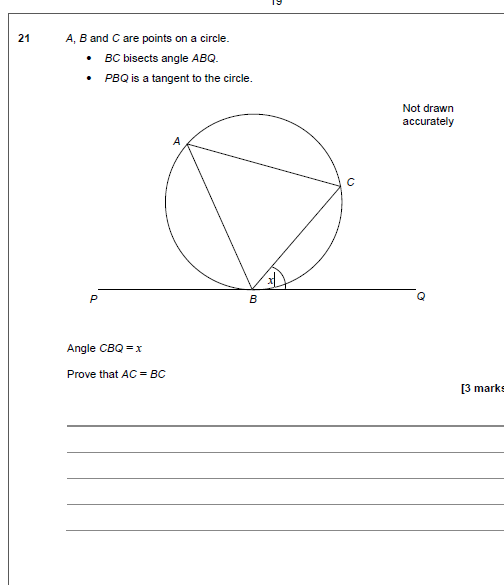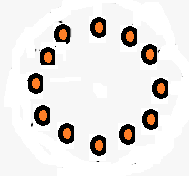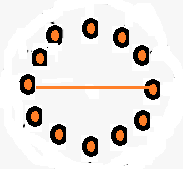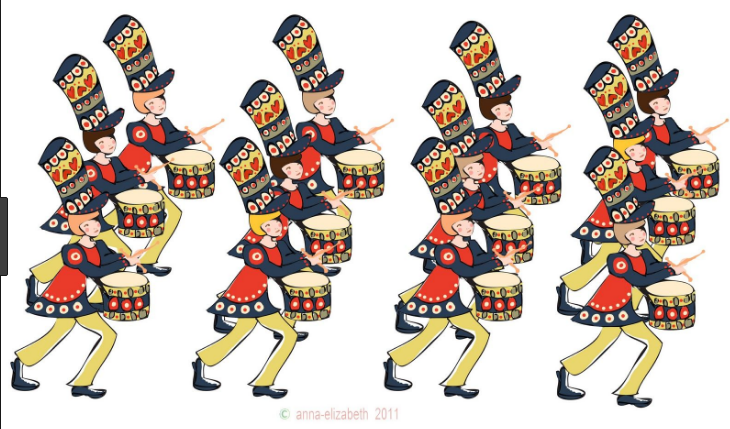In my last post I gave the following exam question which I had looked at with two of my students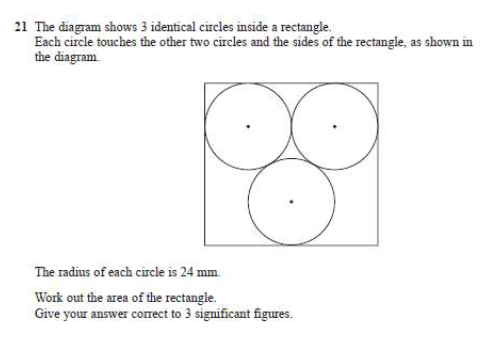
And now, as promised, the answer.
I’ve added a few coloured lines to help me talk this through.
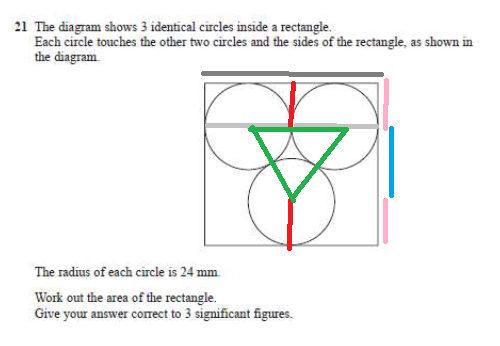
The width of the square is the width of two of the circles. I have marked this with the two parallel grey lines of different shades. As we are told each of the circles has a radius of 24cm, that makes the width of the square 4 x this – 96cm!
The height of the rectangle is a bit less, because there is an overlap of the circle diameters in that direction.
We do know the height includes two radiuses* – shown as the parallel red/pink lines. But there is also the height of the green triangle, shown in blue on the height of the rectangle.
We can find that using Pythagoras Theorem – By splitting the green triangle in half, we have two right angled triangle with sides 48cm (the hypotenuse) and 24cm… so h2 + 242 = 482.
h = sqrt(1728) = 41.57cm (to 4 s.f.)**
It can be easy after doing the most complex part of a calculation to forget we haven’t yet finished the question. Let’s not fall into that trap. We still need to find the total height of the rectangle, and thus the area of the rectangle.
Total height is 41.57 + 2 x 24 = 89.57cm
Area = 89.57 x 96 = 8600cm2 (To 3 s.f)
A couple of notes about my solution
* Yes, the official plural is radii – from the Latin! I always think that looks a bit old fashioned so I tend to say radiuses!
**Its often a judgement call how one rounds ones answer. Exam questions will sometimes say (Round to 3 s.f. or 1d.p) but if they don’t, show what rounding you have done. It is not appropriate to give more figures than any rounding given in the data provided…. BUT if you know you are going to round to 3 s.f. at the end, keep one extra figure in the intermediate numbers. That’s why I use 4.s.f for h, even though I know I am going to give a less precise answer at the end


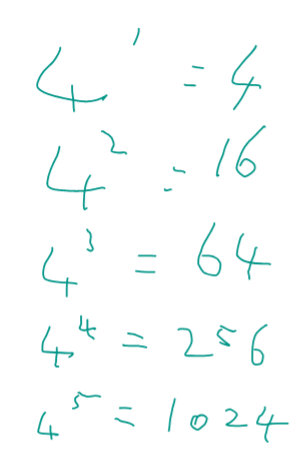
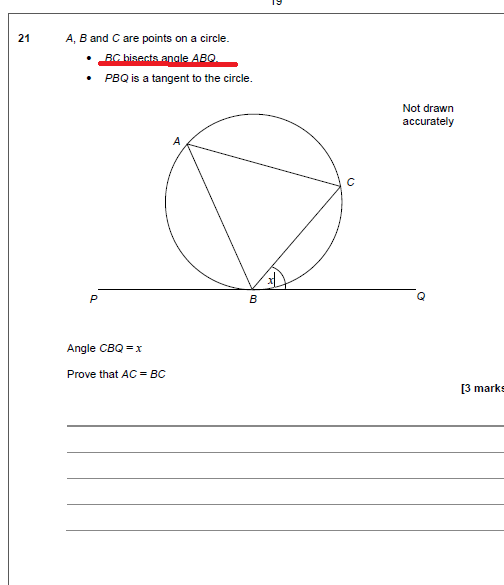 In my last post I described a question where I couldn’t see the answer.
In my last post I described a question where I couldn’t see the answer.

